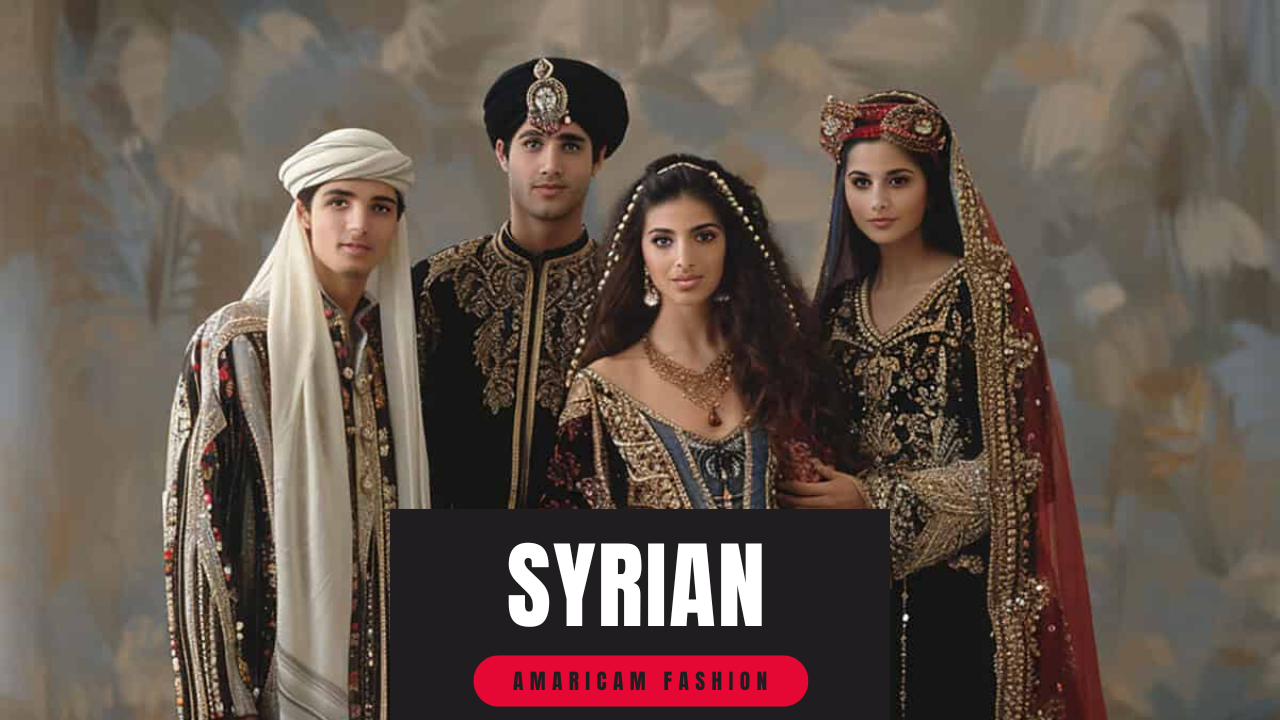Syria is a land where history, identity, and artistry are woven into every thread of traditional attire. From the bustling streets of Damascus to the quiet villages of the countryside, Syrian clothing reflects centuries of cultural exchange and religious influence. These garments aren’t just practical—they carry meaning, heritage, and pride. Rooted in Middle Eastern clothing culture, they showcase the beauty of modesty, elegance, and craftsmanship.
Whether it’s the embroidered thoub, the flowing abaya, or the classic keffiyeh, each piece tells a story of the past. Exploring Syrian Clothing traditional offers a rare glimpse into both ancient traditions and modern adaptations in this richly diverse nation’s wardrobe.
Historical Evolution of Traditional Syrian Clothing
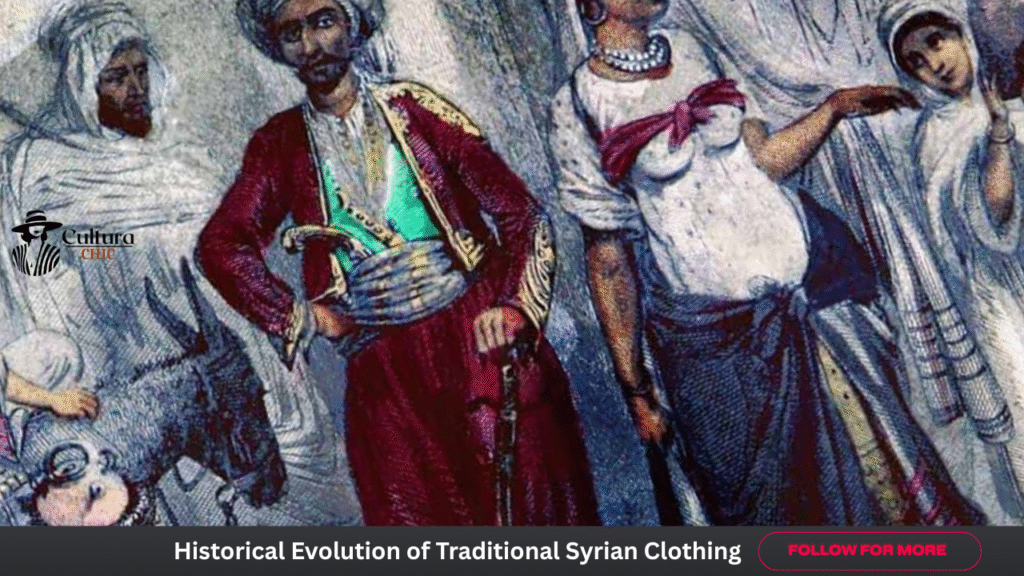
The story of Syrian Clothing traditional goes back thousands of years. Syria has been influenced by the Romans, Byzantines, Persians, and Ottomans. This mix shaped the way Syrian Clothing dress. Early clothing was simple, made for survival in deserts and mountains. Over time, embroidery and bright colors became symbols of identity.
As Islam spread, clothing styles changed to reflect Islamic dress code in Syria. Later, during the Ottoman rule, silk fabrics, golden threadwork, and head coverings became common. Even now, you can see the influence of Islam on clothing and the touch of past empires in every outfit. The blend of cultures gives Syrian clothing its deep beauty.
Key Elements of Syrian Traditional Dress
In Syrian men’s clothing, a long robe called a thoub is common. It’s loose, perfect for hot weather. A sirwal, or loose trousers, is often worn underneath. Men sometimes wear a keffiyeh, a square cloth on the head. This shows tribal pride and protects from the sun.
Syrian Clothing for women’s traditional attire is rich with detail. Women wear an abaya, a long, flowing dress, or a farashah, shaped like butterfly wings. These are sometimes decorated with embroidery. Head coverings like the hijab are common. In some areas, women wear a niqab, covering the face. These traditional garments in Syria reflect family background, religion, and local custom.
Materials, Colors, and Embroidery Styles Syrian Clothing
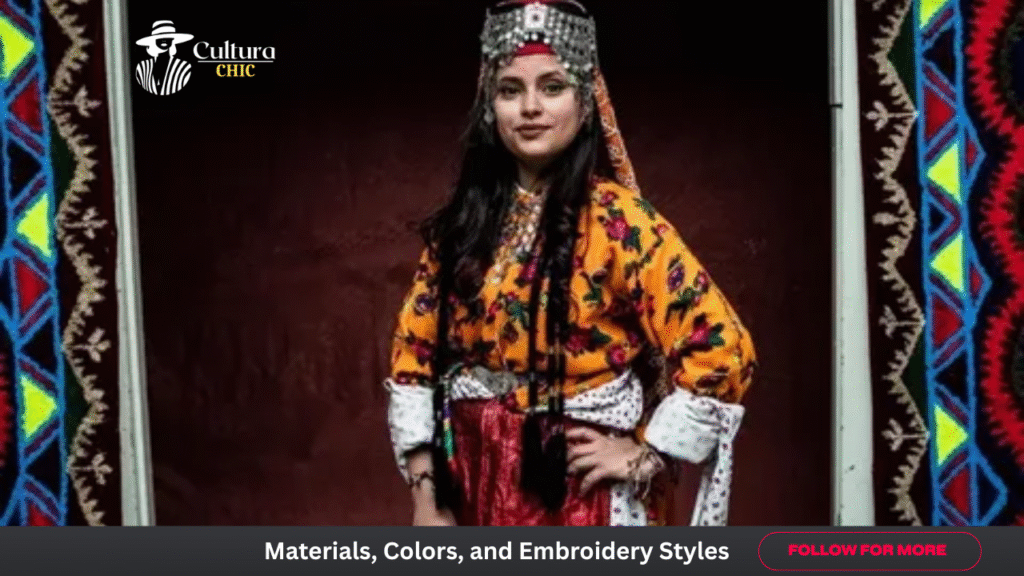
Syrian Clothing embroidery and fabrics are famous for their detail. Cotton, silk, and wool are the main materials. In the desert, people wear cotton for its light feel. In the mountains, wool gives warmth. These fabrics reflect daily life and local weather.
Color choices often have meaning. Red can mean strength, while blue stands for protection. Embroidery shows social status and region. Many clothes have small hand-stitched symbols. These might be flowers, birds, or even Quranic verses. Syria’s Syrian Clothing cultural attire is truly a work of art.
Regional Variations in Syrian Clothing
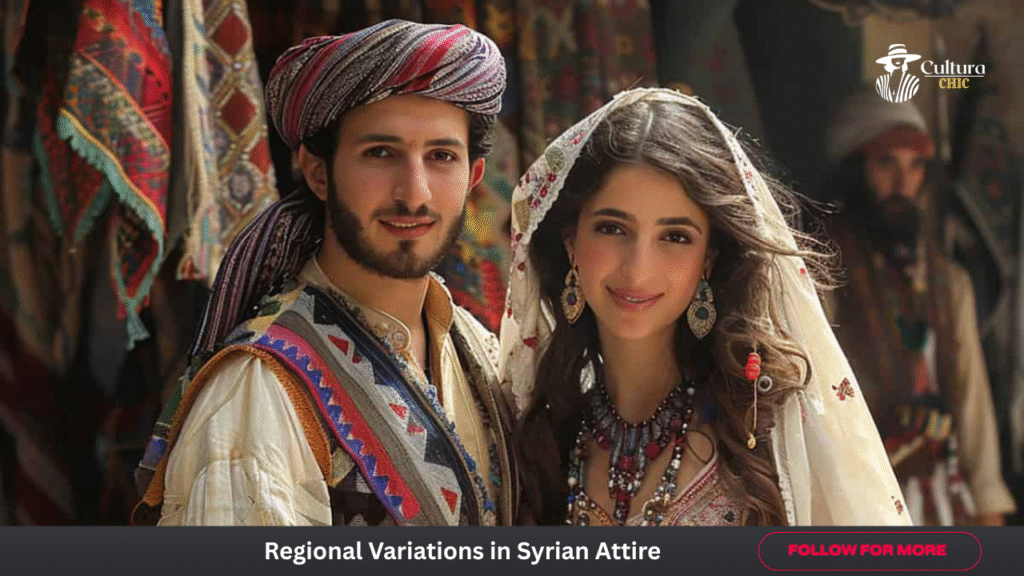
There are big differences in clothing across Syrian Clothing regions. In Damascus clothing style, people wear silk robes and detailed scarves. This city loves beauty and luxury. Meanwhile, Aleppo traditional wear includes heavier fabrics. The designs are more bold and geometric.
In rural areas, clothing is often more practical. The rural vs urban clothing in Syria shows how lifestyle shapes fashion. In cities, you may see more modern touches. But in villages, tradition stays strong. Local weather and religion also affect clothing styles.
Iconic Traditional Syrian Garments
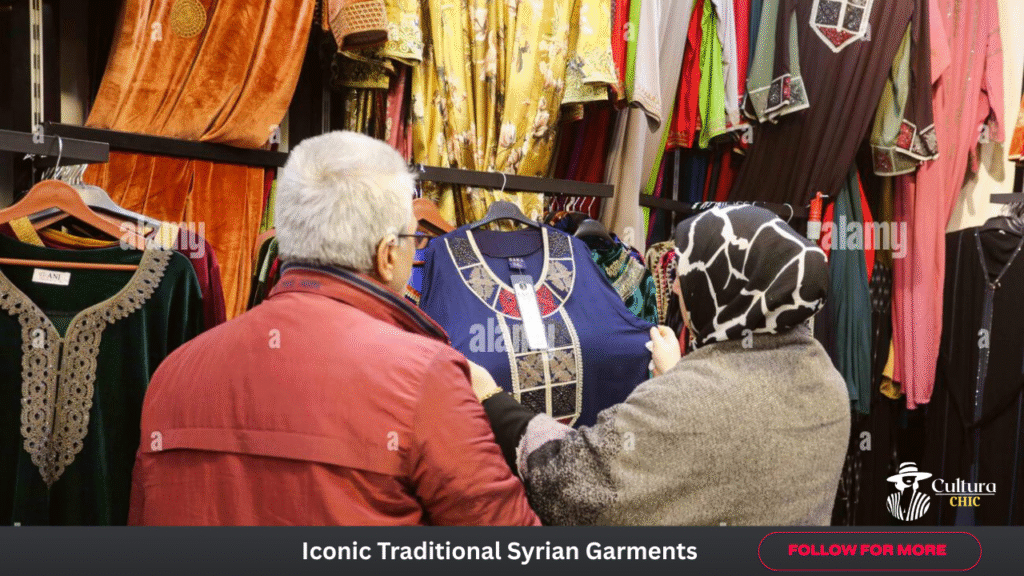
Some outfits are known across Syria. The thoub is a long robe, used by men and women. The sirwal is wide and comfy, often worn under other clothes. The bisht is a cloak used for special events. It shows power and wealth.
The keffiyeh in Syria is more than a headwrap. It shows heritage. Red and white keffiyehs are worn in the north, black and white in the south. For women, the abaya and niqab in Syria show modesty. Each piece is part of Syria’s identity and history.
Traditional Dress in Cultural & Religious Context
Clothing in Syria is shaped by faith. In religious clothing in Syria, modesty is key. Hijab in Syrian culture is common, but how it’s worn varies. Some wear loose scarves, others choose a full niqab. These styles reflect choice and belief.
Christian and Druze Syrians also have their styles. Long dresses and hair coverings are used during prayers or church visits. Clothes for holidays often include embroidery. These Syrian clothing customs help keep traditions alive across different faiths.
Dress Code Etiquette for Tourists in Syria
Tourists often ask, “what to wear in Syria?” The answer depends on where you’re going. In cities, long pants and light shirts are fine for men. Women should cover shoulders, chest, and knees. Wearing loose clothes helps in the heat.
At mosques, the dress etiquette for religious sites in Syria matters a lot. Women should carry a scarf for their hair. Men must avoid shorts and sleeveless tops. Following these tourism dress tips for Syria shows respect and keeps you comfortable during your visit.
Modern Syrian Fashion: Blending Tradition and Modernity
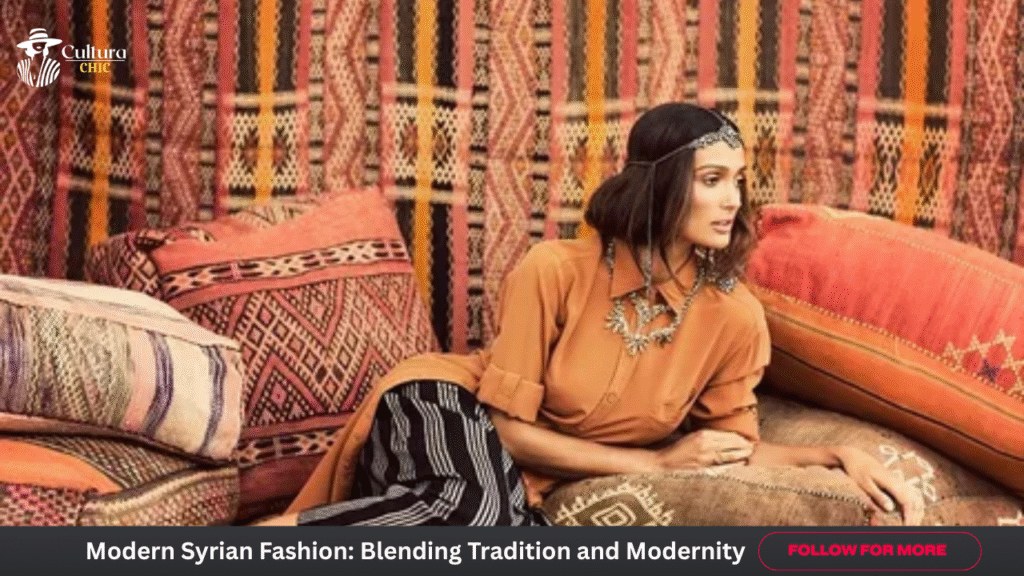
Modern Syrian fashion combines old and new. Many young people wear jeans, t-shirts, and jackets. Yet during festivals or weddings, they return to traditional Arab robes. It’s a beautiful mix of the past and the present.
Social media and TV shows also impact style. Global trends meet Syria’s deep culture. This traditional vs modern clothing Syria helps the youth feel proud while looking modern. It shows the strength of Syrian identity in a changing world.
Special Occasion Attire: Weddings and Festivals
Festival dress in Syria is full of color and joy. During Eid or weddings, women wear sparkly gowns with gold jewelry. Men wear tailored jackets over their robes. The look is both modern and traditional.
Syrian weddings are full of clothing rules. Brides may wear a white gown or a bright traditional dress. Grooms wear robes or suits. These clothes show honor, family pride, and local customs. They are more than outfits; they are a celebration of life.
Table: Traditional Syrian Clothing vs Modern Clothing
| Category | Traditional Syrian Clothing | Modern Syrian Fashion |
| Fabric | Cotton, wool, silk | Cotton, denim, polyester |
| Men’s Wear | Thoub, Sirwal, Keffiyeh | Jeans, T-shirts, jackets |
| Women’s Wear | Abaya, Niqab, Farashah | Dresses, pants, tunics |
| Headwear | Hijab, Keffiyeh, Niqab | Hijab, headbands, uncovered |
| Style | Embroidered, long, layered | Mixed: urban + ethnic prints |
| When It’s Worn | Daily (rural), special events | Daily (urban), work, university |
Final Thoughts
Syria’s traditional clothing is more than just history—it’s a living part of everyday life. Whether it’s a simple keffiyeh or a wedding bisht, each piece holds meaning. For those traveling to Syria cultural guide, understanding this dress code helps connect with locals, show respect, and stay comfortable. It’s not just about what to wear—it’s about being part of the story.
FAQs about Traditional Syrian Clothing
Q: How to dress in Syria as a tourist?
Stay modest. Loose clothes and long layers are best. Light fabrics like cotton are ideal in the heat. Bring a scarf if you plan to visit mosques or churches.
Q: Is hijab mandatory in Syria?
No. While hijab in Syrian culture is common, it’s a choice. Some women wear it daily, others only in religious settings. It depends on personal belief, not strict law.
Q: Can non-Muslims wear traditional Arab clothes?
Yes. Many visitors wear traditional Arab robes to feel closer to the culture. It’s seen as respectful. Just be sure to follow local customs when doing so.
Q: What’s the best clothing for hot weather in Syria?
Cotton shirts, light trousers, and hats. Keep it breezy. Locals prefer natural fabrics for comfort.
Q: Why is modest dress important in Syria?
It’s part of the Islamic dress code in Syria. Covering the body shows respect. This idea exists across religions in the region, not just in Islam.
Welcome to Cultura Chic! I’m CHAUDHARY ALI, an AI-Powered SEO, and Content Writer with 2 years of experience.
